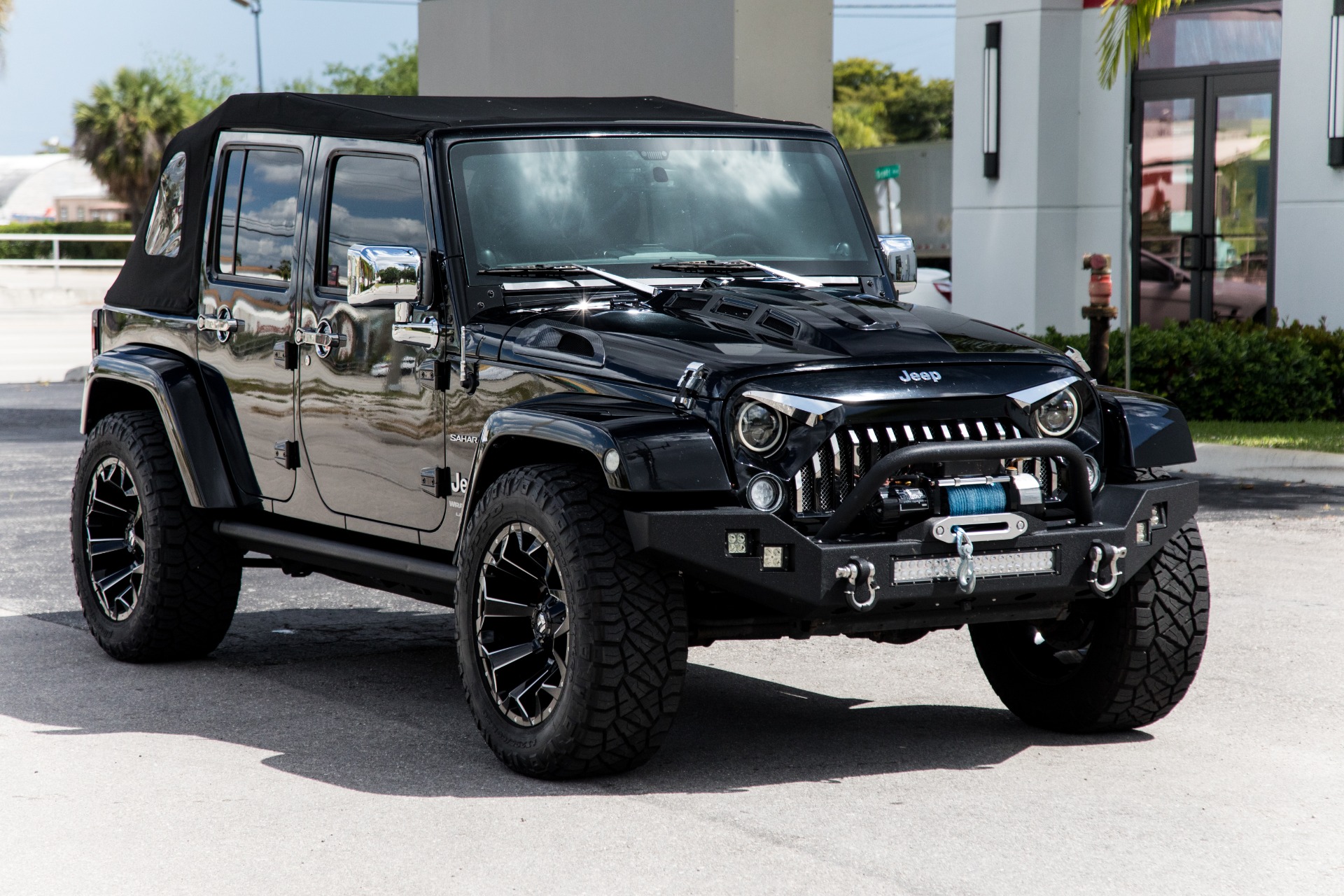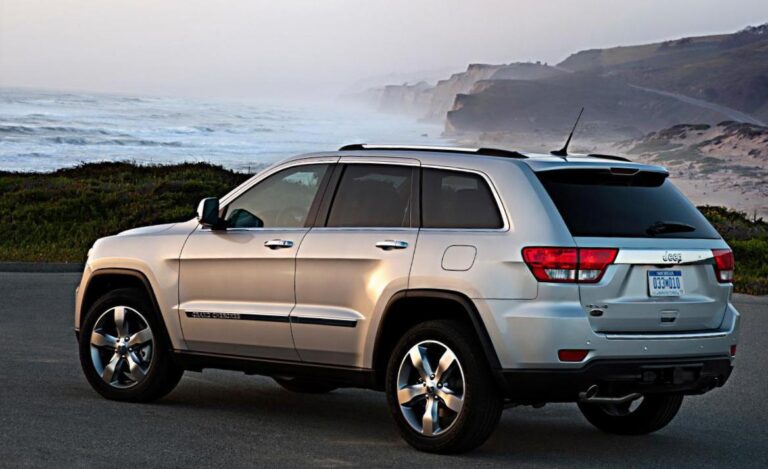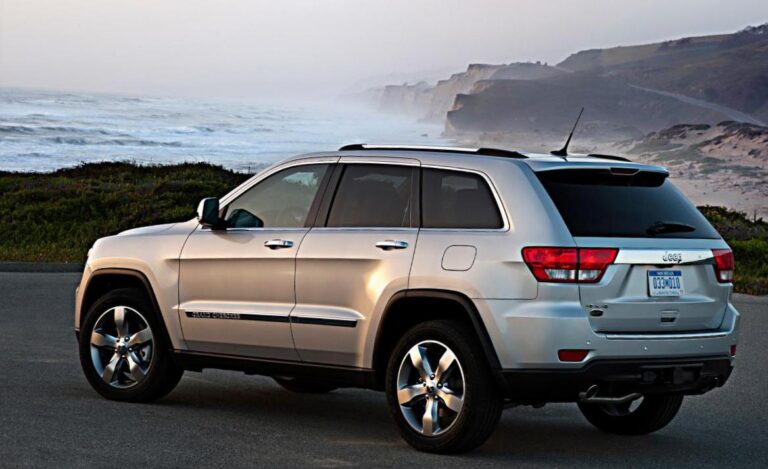Wrangler Jeep 1995: The Quintessential YJ Experience
Wrangler Jeep 1995: The Quintessential YJ Experience jeeps.truckstrend.com
Introduction: A Farewell to Square Headlights and a Legacy Forged
The year 1995 marked a significant turning point in the storied history of the Jeep Wrangler. It was the final production year for the YJ generation, a model that, despite its initially controversial square headlights, carved out its own unique niche in the hearts of off-road enthusiasts and casual drivers alike. The 1995 Wrangler YJ represents the culmination of this particular era, embodying a blend of raw, unadulterated utility with just enough modern refinement to appeal to a broader audience. More than just a vehicle, the 1995 Wrangler is a testament to rugged simplicity, a symbol of freedom, and a highly sought-after classic for those who appreciate its distinctive character and unparalleled capability. For many, it’s not just a car; it’s an adventure waiting to happen, a canvas for customization, and a cherished piece of American automotive heritage.
Wrangler Jeep 1995: The Quintessential YJ Experience
The YJ Generation: A Brief History and the 1995 Model’s Place
The Jeep Wrangler YJ was introduced in 1987, replacing the beloved but aging CJ series. Its primary design goal was to retain the iconic open-air freedom and off-road prowess of its predecessors while offering improved on-road manners and a touch more comfort to broaden its appeal. The most notable and often debated design change was the switch from traditional round headlights to rectangular ones – a departure that initially alienated some purists but ultimately became a defining characteristic of the YJ.
Throughout its nine-year production run (1987-1995), the YJ underwent continuous, albeit subtle, refinements. The 1995 model year benefits from all these incremental improvements, making it arguably the most polished and desirable iteration of the YJ. By 1995, most of the initial kinks had been ironed out, and the model boasted a robust powertrain, a slightly more refined interior, and a reputation for reliability. As the final YJ, it serves as a bridge between the classic CJ and the coil-sprung TJ that would follow, encapsulating the best of the leaf-sprung era with the benefit of late-model enhancements. Its status as the last of its kind adds a layer of nostalgia and collectibility, making it a particularly attractive option for enthusiasts today.
Key Features and Specifications of the 1995 Wrangler YJ
The 1995 Wrangler YJ came equipped with a range of features designed for both on-road utility and serious off-road adventure. Understanding these specifications is crucial for anyone considering ownership.
- Engine Options:
- 2.5L AMC 150 I4: This inline-four-cylinder engine was the standard powerplant, producing around 123 horsepower and 139 lb-ft of torque. While adequate for light duty and trail use, it often felt underpowered on highways, especially with larger tires.
- 4.0L AMC 242 I6: The inline-six-cylinder engine was the undisputed king of the YJ powertrain options, delivering 180 horsepower and 220 lb-ft of torque. Known for its legendary reliability, strong low-end torque, and smooth operation, the 4.0L is highly sought after by enthusiasts and commands a premium.

- Transmission Options:
- 5-Speed Manual: The Aisin AX-5 was paired with the 2.5L engine, while the more robust Aisin AX-15 was mated to the 4.0L. Both are generally reliable and offer engaging driving experiences.
- 3-Speed Automatic: The TorqueFlite 999 (with the 2.5L) and the 32RH (with the 4.0L) provided an easier driving experience, though at the expense of fuel economy and ultimate control compared to the manuals.

- Transfer Case: All 1995 YJs came standard with the robust NP231 Command-Trac part-time transfer case, offering 2H, 4H, and 4L modes, making it an excellent system for diverse off-road conditions.
- Axles:

- Front: Dana 30
- Rear: Dana 35 (most common), with a rare possibility of a Dana 44 on some Sahara models, though less common in ’95 YJs than earlier years.
- Suspension: The YJ retained the traditional leaf spring suspension at all four corners. While durable and capable off-road, it provided a stiffer and less refined ride on pavement compared to the coil-sprung suspension of later Wranglers.
- Exterior Features: Signature square headlights, removable doors, a fold-down windshield, and options for a soft top, hard top, or bikini top, allowing for true open-air driving.
- Interior: Practical and utilitarian, featuring durable materials, a roll bar for safety, and basic instrumentation. Comfort was secondary to functionality.
Trim Levels and Their Distinctions
The 1995 Wrangler YJ was available in several trim levels, each offering a slightly different set of features and aesthetic cues.
- Wrangler S / SE: These were the base models, typically equipped with the 2.5L engine and minimal frills. They were designed for those seeking the most affordable entry into Jeep ownership, focusing on core functionality and ruggedness.
- Wrangler Sport: A step up from the base models, the Sport trim often included more standard features, such as larger tires, a full center console, and optional amenities. The 4.0L engine was a common upgrade for Sport models.
- Wrangler Sahara: The Sahara was the top-tier trim, designed to offer a more upscale and distinctive appearance. Sahara models typically featured unique exterior decals, body-colored fender flares, alloy wheels, special "Sahara Green" interior fabric (often with map pockets), fog lights, and a full complement of options, including the 4.0L engine. These are generally the most desirable YJ trims for collectors.
- Wrangler Rio Grande: A special edition offered primarily in 1995, the Rio Grande was essentially an SE model with a unique cosmetic package. It featured distinctive "Rio Grande" decals, bright color options (such as Teal, Bright Mango, and White), and specific interior fabric. These were generally equipped with the 2.5L engine.
Why Choose a 1995 Wrangler YJ Today? Benefits and Appeal
Despite being nearly three decades old, the 1995 Wrangler YJ holds a strong appeal for a variety of reasons:
- Affordability: Compared to newer Wrangler models, the YJ generally offers a much more accessible entry point into Jeep ownership, making it an excellent choice for first-time Jeepers or those on a budget.
- Simplicity and Maintainability: With fewer complex electronics and a straightforward mechanical design, the YJ is relatively easy to work on. Many common repairs can be performed by a competent DIY mechanic, reducing labor costs.
- Legendary Durability: Especially when equipped with the 4.0L engine, the YJ is known for its robust construction and longevity. These vehicles were built to withstand harsh conditions and often continue to run strong even after decades of use.
- Unmatched Customization Potential: The aftermarket support for the YJ is enormous. From lift kits and larger tires to heavy-duty bumpers, winches, and interior upgrades, almost every component can be modified or replaced to suit individual preferences and specific off-road needs.
- Classic Status and Growing Collectibility: As the last of the leaf-sprung Wranglers and the unique "square headlight" generation, the 1995 YJ is increasingly viewed as a modern classic. Well-maintained or restored examples are beginning to appreciate in value.
- Exceptional Off-Road Capability: Even in stock form, the YJ is a highly capable off-road vehicle. Its compact size, short wheelbase, solid axles, and robust 4WD system make it adept at tackling challenging trails, rocks, and mud.
Important Considerations and Common Challenges
While the 1995 Wrangler YJ offers numerous benefits, prospective owners should be aware of potential challenges and common issues associated with a vehicle of this vintage.
- Rust: This is by far the biggest enemy of the YJ. Common rust areas include the frame (especially near the skid plate, spring hangers, and rear bumper), body tubs (floorboards, wheel wells), rocker panels, and around the windshield frame. A thorough rust inspection is paramount before purchase.
- Leaf Spring Ride Quality: While excellent for off-roading, the leaf spring suspension provides a stiffer, bumpier, and less refined ride on paved roads compared to modern coil-sprung vehicles. This is simply a characteristic of the design.
- Soft Top/Hard Top Condition: Given their age, soft tops often show significant wear, tear, and fading, requiring replacement. Hard tops can also have issues with seals and cracks.
- Age-Related Maintenance: Expect to address common wear items like bushings, U-joints, seals, hoses, and belts. Electrical issues, while not rampant, can occur due to aging wiring.
- Steering Play: Over time, components like tie rod ends, drag links, and the steering gearbox can develop play, leading to loose steering.
- Safety Features: The 1995 YJ lacks modern safety features like multiple airbags, advanced braking systems (ABS was optional and basic), and stability control. Drivers should be mindful of its limitations.
- Fuel Economy: Especially with the 4.0L engine and larger tires, the YJ is not known for its fuel efficiency.
Buying, Owning, and Maintaining Your 1995 YJ
Acquiring and caring for a 1995 Wrangler YJ requires a strategic approach to ensure a rewarding experience.
Buying Tips:
- Thorough Rust Inspection: This cannot be stressed enough. Get underneath the vehicle with a flashlight. Pay close attention to the frame rails, body mounts, floor pans, and spring perches. Surface rust is manageable, but widespread perforation or structural rust is a major red flag.
- Engine and Drivetrain Check: Listen for unusual noises (knocking, ticking), check for leaks (oil, coolant, transmission fluid, differential fluid), and ensure the engine idles smoothly. Test all gears, including 4WD high and low.
- Suspension and Steering: Look for worn bushings, bent components, and excessive play in the steering wheel. Bounce each corner to check shock absorber function.
- Soft/Hard Top Condition: Evaluate the condition of the top, windows, and zippers. Replacements can be costly.
- Previous Modifications: Assess the quality of any aftermarket modifications. Poorly installed lifts or electrical work can lead to headaches.
- Service History: Ask for maintenance records. A well-documented history indicates a caring owner.
- Pre-Purchase Inspection (PPI): If possible, have a trusted mechanic (ideally one familiar with Jeeps) perform a PPI. It’s a small investment that can save you from significant future expenses.
Ownership and Maintenance:
- Regular Fluid Changes: Adhere to a strict schedule for engine oil, transmission fluid, transfer case fluid, and differential fluid changes.
- Grease Zerks: Many components (driveshafts, tie rods, ball joints) have grease fittings. Regular lubrication is vital.
- Rust Prevention: Proactively address any surface rust. Consider undercoating or rust-proofing treatments, especially if you live in a region with road salt.
- Tire Care: Rotate tires regularly and maintain proper inflation for optimal performance and tire longevity.
- Component Inspection: Periodically inspect brakes, steering components, universal joints, and suspension bushings for wear.
- Soft Top Care: Clean and protect your soft top regularly to extend its life. Store it properly when not in use.
Pricing Table: Wrangler Jeep 1995 (Estimated Market Values – USD)
The price of a 1995 Wrangler YJ can vary significantly based on condition, mileage, engine type, modifications, and regional demand. The values below are estimates as of late 2023 / early 2024.
| Condition Category | Description | Estimated Price Range (USD) | Key Factors Affecting Price |
|---|---|---|---|
| Poor / Project | Significant rust (frame/body), major mechanical issues, non-running, missing parts, extensive work needed. | $3,000 – $6,000 | Extent of rust, engine condition (2.5L vs. 4.0L), completeness of vehicle, title status. Often bought for parts or complete restoration. |
| Fair / Driver | Functional, runs and drives, but has noticeable cosmetic flaws, moderate rust, and/or minor mechanical issues. | $6,000 – $10,000 | Mileage, engine type (4.0L commands more), extent of rust (especially frame), condition of soft/hard top, need for immediate repairs, overall cleanliness. |
| Good / Well-Maintained | Minimal rust, good running order, all systems functional, minor cosmetic imperfections, consistent maintenance history. | $10,000 – $15,000 | Engine type (4.0L preferred), low original mileage for its age, lack of significant rust, condition of interior/exterior, quality of any modifications, presence of desirable options (e.g., hard top, AC). |
| Excellent / Restored | Near-pristine condition, very low mileage, professionally restored, rare/original parts, show-quality. | $15,000 – $25,000+ | Authenticity, quality of restoration, extremely low original mileage, rare trim levels (e.g., highly original Sahara), documented history, overall perfection. These are collector-grade vehicles. |
Note: These are general estimates. Local market conditions, specific modifications (e.g., high-quality lifts, engine swaps), and emotional appeal can cause prices to fall outside these ranges. The 4.0L engine typically adds a significant premium, often $2,000-$5,000+ over a comparable 2.5L model.
Frequently Asked Questions (FAQ) about the 1995 Wrangler YJ
Q1: What’s the main difference between the 1995 YJ and the newer TJ (1997-2006) models?
A1: The most significant difference is the suspension: the YJ uses leaf springs, while the TJ switched to coil springs, offering a more comfortable and refined on-road ride. Visually, the YJ is known for its square headlights, whereas the TJ reverted to the traditional round headlights.
Q2: Is the 4.0L engine truly as reliable as people say?
A2: Yes, the 4.0L AMC inline-six engine is widely regarded as one of the most reliable and durable engines ever produced by Jeep. With proper maintenance, it can easily last for 200,000 to 300,000 miles or more.
Q3: How good is the 1995 YJ off-road in stock form?
A3: Excellent. Its solid axles, robust transfer case, short wheelbase, and generous ground clearance make it highly capable on trails, rocks, and in mud, even without modifications. It embodies the core spirit of Jeep’s off-road prowess.
Q4: What are the absolute must-check items when buying a used 1995 YJ?
A4: Frame rust (especially around the skid plate and rear spring hangers), floorboard rust, condition of the engine (especially for leaks or unusual noises), and testing the 4WD system.
Q5: Can a 1995 Wrangler YJ be a reliable daily driver?
A5: It can be, but it’s not for everyone. The ride is rougher, it’s noisier, and lacks the comfort and modern amenities of contemporary vehicles. However, for those who appreciate its ruggedness and simplicity, it can be a perfectly functional daily driver, especially if well-maintained.
Q6: Are parts for the 1995 YJ still readily available?
A6: Absolutely. Due to its popularity and the large number of YJs produced, there’s a massive aftermarket for replacement parts, upgrade components, and even new OEM-style body panels. Finding parts is generally not an issue.
Conclusion: An Enduring Icon of Off-Road Freedom
The 1995 Wrangler Jeep YJ stands as a testament to an era of uncompromised ruggedness and a unique design philosophy. As the final iteration of the "square headlight" generation, it represents a refined package of off-road capability, mechanical simplicity, and iconic style. While it may demand a keen eye for rust and an appreciation for its utilitarian nature, the rewards of owning a 1995 YJ are substantial. It offers an unparalleled connection to the road (or lack thereof), an almost limitless potential for customization, and a growing status as a cherished classic. For the enthusiast seeking a capable, characterful, and engaging vehicle that truly embodies the spirit of adventure, the 1995 Wrangler YJ remains an outstanding choice – a true icon that continues to inspire freedom on four wheels.






